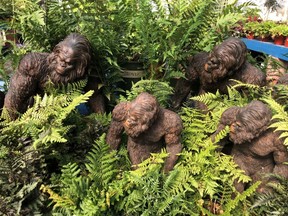Today we are going to talk about how to know your enemies. Tiny whiteflies, about 1/16 inch long, resemble moths with white, powdery wings. Shake a suspicious plant. If a white cloud rises, the plant has whiteflies.
Watch out for whiteflies outdoors once the weather warms up. They attack many vegetables and flowers. Look for them indoors in the fall when they come in from the cold; they especially like chrysanthemums and poinsettias. Affected plants have yellowing, sticky foliage and may be covered with black mold that grows on honeydew secreted by the whitefly.
Don’t waste money buying yellow sticky traps to catch whiteflies. Instead, make your own by coating yellow construction paper with petroleum jelly. Set traps on sticks on the ground a few inches from plant foliage or hang over trays of seedlings or infested houseplants.
Nicotiana, or catnip, attracts whiteflies away from other plants where you can destroy them. To repel whiteflies, plant some marigolds or nasturtiums between more susceptible plants like sage.
Control whiteflies on houseplants by wiping the leaves with cotton swabs dipped in diluted rubbing alcohol. You can also spray with insecticidal soap, pyrethrum, or a solution made by crushing garlic cloves in water.
Use a small hand-held vacuum to remove whiteflies from leaves or even from the air as they hover over plants.
Many gardeners don’t need to be ambushed by four-legged pests for years, but for others, deer or rabbits are daily challenges. Most of us enjoy the occasional glimpse of wildlife—if it doesn’t ruin our plants. Whether animals are friends or foes depends in large part on how hungry they are.
When animal populations are high and food is scarce, animals overcome their instinctive fear of humans long enough to steal a good meal. Sometimes you can tell how close wild animals are to starvation by the persistence with which they chase after your yard.
Animals that have many other food sources can often be deterred by offending their sense of smell, using creative deterrent devices, or infusing their food with objectionable flavors.
For example, vinegar and ammonia offend the noses of most mammals. Many of the tips will be featured in next week’s column.








